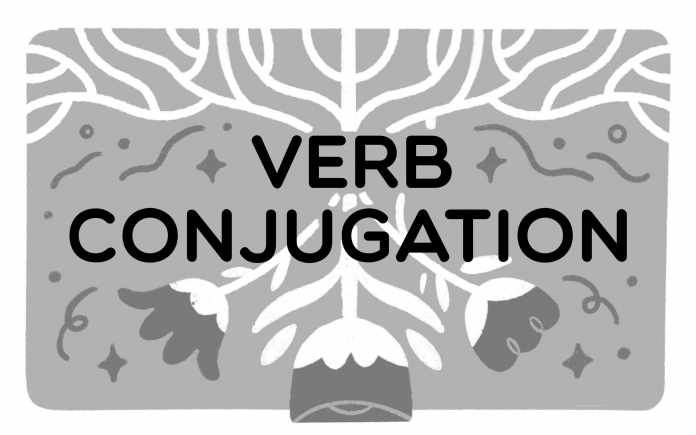If you want to learn a foreign language, Japanese could be a great choice, as it’s a popular destination for foreign exchange students and immigrant workers. When you start learning Japanese, one of the first topics you’ll come across is Japanese verb conjugation. While it isn’t difficult, there are some rules and exceptions that you should keep in mind.
Here’s a seven-step guide to Japanese verb conjugation for absolute beginners.
Step-1: Japanese Verb Conjugation Introduction
Verb conjugation, or to conjugate a verb, means to put it into the present, past, or future tense based on the message that you want to communicate. Let’s understand in English first. If you take the verb “laugh,” its verb conjugations will be:
- I laugh
- I laughed
- I will laugh
These are the present, past, and future conjugations of the verb “laugh.” However, Japanese verb conjugation is slightly different, as there are two types of verbs – RU verbs and U verbs. All verbs in Japanese end with either RU or U. The conjugation will change based on the type of verb.
Step-2: RU Verbs Present and Future Tenses
Let’s take the verb “to eat,” which is taberu in Japanese. As you can see, the verb ends with “ru,” making it an RU verb. Now, remove RU, and you’re left with tabe, which means eat.
In the present tense, you’ll be using –masu after the basic verb form. So, Tabemasu means “I eat,” a present tense sentence. In many cases, the same conjugation (–masu) is used for both past and present tenses.
Hence, Tabemasu also means “I will eat.” Similarly, Odorimasu means “I will dance.”
Step-3: RU Verbs Past Tense
In the case of the past tense of RU verbs, you have to replace –masu with –mashita. For example,
- I ate: Tabemashita
- I danced: Odorimashita
There are no exceptions to these rules, which will make your learning easier. So, remember these rules, and you’ll be good to get started with Japanese verb conjugation.
Step-4: How to Conjugate U Verbs?
Now, let’s come to U verbs. U verbs are verbs in the Japanese language that end with the letter “U.” Some examples of Japanese U verbs are:
- Read: Yomu
- Listen: Kiku
- Laugh: Warau
As you can see, U verbs are further divided into smaller families, such as ku, mu, au, and the like. Here’s where things can get a bit tricky, as remembering a verb ending with U isn’t enough. You’ll also need to remember the family it belongs to.
In the next section, you’ll learn about the importance of families in the Japanese language.
Step-5: Importance of Japanese Verb Families
The Japanese verb conjugation is all about identifying a verb and changing it. Therefore, identifying which family a U verb belongs to is essential if you want to change it.
The first step of verb conjugation is the same as it was with RU verbs. You remove the letter U from the verb. But instead of just getting rid of it, you’ll have to ensure that you know what family it belongs to.
Hang in there as you’re about to learn why families matter.
Let’s consider the verb utau, meaning “to sing.” The first step, as discussed previously, is to remove the U letter in the end. You’ll now be left with uta. Now, find the family to which the verb belongs, which in this case is the “i” family (as au in itself isn’t a family).
Since the verb belongs to the “i” family, you’ll put an I after the base form of the verb – uta. Here’s how things will look. Be sure to keep families in mind when writing a business letter, email, or anything in Japanese.
Present/Future: Utaimasu
Past: Utaimashita
Same way, it’ll be
Yomu – Yomimasu – Yomimashita
Kiku – Kikimasu – Kikimashita
Before we head further, there are useful Japanese verbs you should know.
- I can: –raremasu or –emasu; for example, yomemasu (i can read) or miraremasu (i can see)
- I cannot: –raremasen or –emasen; for example; yomemasen (I can’t read) or miraremasen (I can’t see)
- I want to: –tai (RU) or –itai (U); for example, Utaitai (I want to sing) or Tabetai (I want to eat)
- I don’t want to: –takunai or –itakunai; for example; utaitakunai (I don’t want to sing) or tabetakunai (I don’t want to eat)
Step-6: Japanese Verb Conjugation Rules You Can Break
There have to be some exceptions, right? While Japanese verb conjugation is fairly simple, as most verbs follow the rules discussed above, there are some verbs that don’t adhere to those rules. A verb that ends with RU might follow the rules of U verbs and vice versa.
A common example is hairu, which means “to enter.” It’s an RU verb, and ideally, its present/future tense should be haimasu. In reality, it’s hairimasu. As you can see, the rules of U verbs are coming into play here.
Some other words that follow this exception are:
- Kaeru (to return)
- Shiru (to know)
- Shaberu (to chat)
- Iru (to need)
Now, you might be waiting to learn an easy way or trick to remember these exceptions. Unfortunately, there’s none. Just like irregular English verbs, you’ll need to remember these sneaky words.
Step-7: Irregular Japanese Verbs You Should Know
While there are numerous irregular Japanese verbs that break the U/RU rule, two of them are very common, and hence, every Japanese learner should learn them. These are suru (to do) and kuru (to come).
Let’s talk about suru first. It’s a RU verb, as it ends with RU. So ideally, it should become sumasu and sumashita. However, that’s not the case. What’s worse, it doesn’t follow the U rule either and doesn’t become surimasu or surimashita.
Here’s what Suru becomes:
- Shimasu
- Saremasu
- Shimasen
- Shimashita
- Shitakunai
Why? Well, no one really knows! In the same way, kuru becomes:
- Kimasu
- Kimashita
- Koraremasu
- Kimasen
- Kitakunai
Conclusion: Japanese Verb Conjugation
If you’re learning Japanese or planning to start learning, verb conjugations are one of the first topics you’ll come across. Mastering verb conjugations will build your foundation and will help you learn other concepts of grammar and language more easily.







